Among modern types of roofing, membrane roofing can be attributed to one of the most durable. When the installation of the membrane roof is carried out in accordance with technological requirements, a high-quality roofing can serve its owners from 40 to 50 years. It is distinguished by excellent operational characteristics, successfully resists changes in air temperature and therefore can be applied in any region of the country.
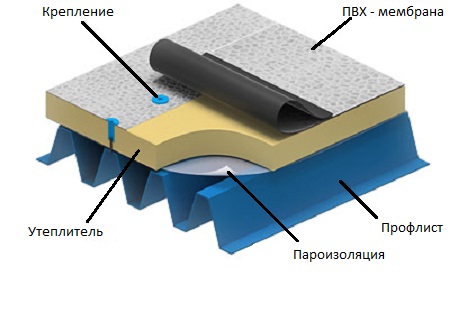
It is not difficult to build such a roof, since the peculiarity of the material allows you to install the coating in only one layer. The use of modern polymeric materials provides maximum roof waterproofing and provides an opportunity to save on materials for additional waterproofing. Due to the elasticity and flexibility that is inherent in polymers, they can be successfully used for the construction of roofs of any shape and slope.
To date, the construction of the roof of the house with a membrane roof allows you to get a roofing that is almost completely monolithic and has excellent waterproofing properties. This roof is deservedly considered the most modern and meets the requirements of recent times.
Content
Membrane Roofing Materials
A roof of this type is equipped using special materials, which are commonly called membrane materials, which are available in a large assortment on the country's market. They are distinguished by reliability, durability and a variety of color shades.
Do-it-yourself roofing can be done using different types of roofing membranes. All of them have their own characteristics, advantages and disadvantages. If until recently, when it came to membrane roofing, it was implied that it was made of PVC membranes, today EPDM and TPO membranes are used for this purpose. Let us dwell in more detail on each of them.
- PVC membranes are plasticized polyvinyl chloride reinforced with a polyester mesh. To increase the elasticity of the membranes, a large percentage of volatile plasticizers is added to the polyvinyl chloride. Cloths of PVC membranes during installation work are welded together with hot air using special equipment. The advantage of this reliable design is that the joints of the canvases in strength can compete with integral sections. PVC membranes are highly resistant to ultraviolet rays and fire. They are distinguished by a variety of colors, but, unfortunately, they tend to fade. The disadvantages that you need to know about when you will decide how to make the roof correctly are the poor resistance of the membrane to solvents, bitumen and various oils. The membrane sheet emits volatile compounds into the environment, which is also a negative factor.
- The basis of the material for EPDM membranes is synthetic rubber. Their strength, like PVC membranes, is enhanced by the use of a mesh of polyester yarns. The advantage of these membranes is their relatively low cost, excellent elastic properties and long service life. The disadvantage can be considered that the membrane sheet must be connected using glue. And this material makes joining places “problematic” sections of the roof.As a result, we have to think about repairing the membrane roof of EPDM more often than we would like, because water flows often at the joints.
- TPO membranes are a derivative of thermoplastic olefins. They are available both unreinforced and reinforced with fiberglass or polyester. Like PVC membranes, they are welded together using special equipment with hot air. The resulting seam is characterized by high strength and reliability. Installation of a membrane roof using TPO membranes is more time-consuming, since they have less elasticity compared to PVC and EPDM membranes.
When installing a membrane roof using the above materials, various technologies are used. Let us dwell on those that are used most often.
Ballast fixing method of membranes
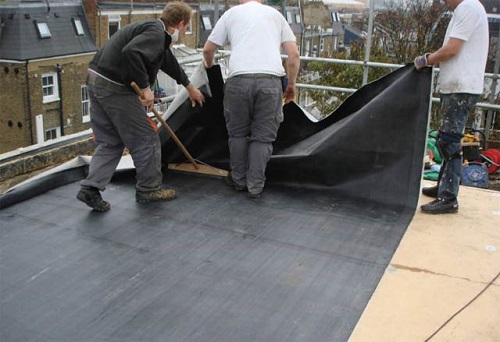
Fixing roofing membranes with a ballast method, which is considered the simplest, is used when the roof slope is less than 15 degrees. It is produced as follows:
- Membranes are laid on the roof surface. Then the installation of the membrane roof is carried out so that they are leveled and fixed around the perimeter with glue or by welding. Membranes are fixed in places where they are adjacent to the vertical elements of the roof.
- A ballast layer is laid on top of the membrane thus prepared. Its best species are river pebbles of medium fraction (from 20 to 40 mm), rounded gravel and gravel.
- Ballast weight must be at least 50 kg per square meter.
- In the case when they will use neokatanny gravel or broken stone as ballast, the membrane sheet will need to be protected from possible damage. You can lay on top of it a non-woven with a density of more than 500 g / m2 or mats.
If you start building a roof, this kind of instruction will provide you with practical practical help.
The mechanical method of fixing membranes
In the case when the roof structure is not able to withstand the loads that are associated with the ballast fastening of roofing membranes, another method of securing them is used. We are talking about the mechanical installation of the membrane roof.
Membrane mechanical fixing is used when the structural features of the roof do not allow high-quality gluing of the waterproofing membrane material.
As a basis for mechanical fastening, corrugated board, reinforced concrete, wood and so on can be used. The membranes can be fixed around the perimeter of the protruding roof elements using special edge rails, on the lower side of which a sealing layer is applied.
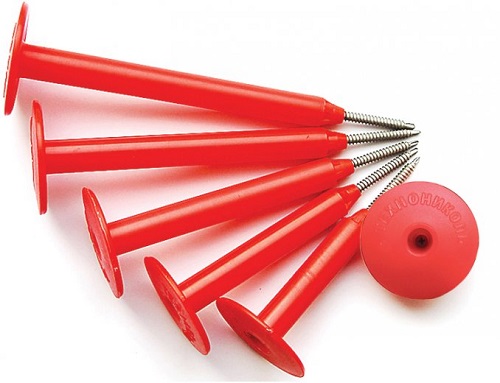
Roof roofing with your own hands provides that membrane materials will be mounted on the roof using telescopic fasteners. It is a plastic umbrella with a wide hat and metal anchors, which can be replaced with large disk holders. The latter are used when the roof slope has an angle of more than 10 degrees.
Installation of mechanical fasteners is carried out in areas where the membrane is applied. Fasteners are arranged in increments not exceeding 200 mm. When the slope of the roof slope is more than 2-4 degrees, an additional fastener line is made where the valley is located.

If the construction of the roof of the house is carried out with mechanical fastening of the roofing membrane in the places of the base of the roof, it is necessary to take measures to protect the membrane from damage. To do this, geotextile material or non-woven fabric is laid under it.
Fixing roofing membranes by gluing
Roofing membranes are fixed by gluing in very rare cases. The reason is the rather expensive cost of such work.There is no guarantee that the strength of fixing the membrane roofing to the base of the roof will be quite high.
However, there are situations where the use of other methods, for some reason, is impractical or, better to say, impracticable. Then you can resort to a glue connection. Installation of the membrane roof is then carried out using adhesive mixtures. In terms of tensile strength, their connection should exceed the strength of the mating of the adjoining layers of the roof.

The gluing of roofing membranes can be done not over their entire area, but in the most critical places. This is done, as a rule, around the perimeter of the roof and in places where the panels overlap. The problem areas include ribs, valleys and junction of membranes to the protruding roof elements - chimneys, ventilation ducts and other protruding roof structures. Thus, you reduce the cost of adhesives.
Heat-welded method for joining roof membranes
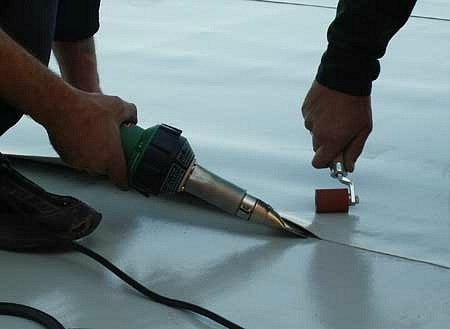
When deciding how to make a roof, many developers prefer the heat-welded method of joining roof membrane membranes. It allows you to make the roof reliable and, at the same time, give it a modern look. Work is carried out using a special welding machine. He "gives out" a stream of air, which has a temperature of 400 to 600 degrees. To ensure the strength and reliability of the connection of roofing membranes, it is recommended to make the width of the welded layer 20-100 mm.
Membrane coating canvases, the connection of which uses welding, create a sealed surface of high quality. It should not be forgotten that the effect of ultraviolet rays does not have a destructive effect on the welded joint, which cannot be said about adhesive seams.

A significant drawback of such compounds is that due to the complexity of the welding process, it will be difficult to do it yourself.
If you are seriously worried about a question such as building a roof, instructions for using one or another method of installing a membrane roof will be your reliable guide.
The technology described above of its device can be successfully used in the construction of large structures, private cottages and house buildings. With their careful study, you can gain theoretical knowledge about the properties that membrane roofing materials possess. Given their characteristics, scope and features of the application, you will have the opportunity to have a beautiful, reliable and durable membrane roof in the future!

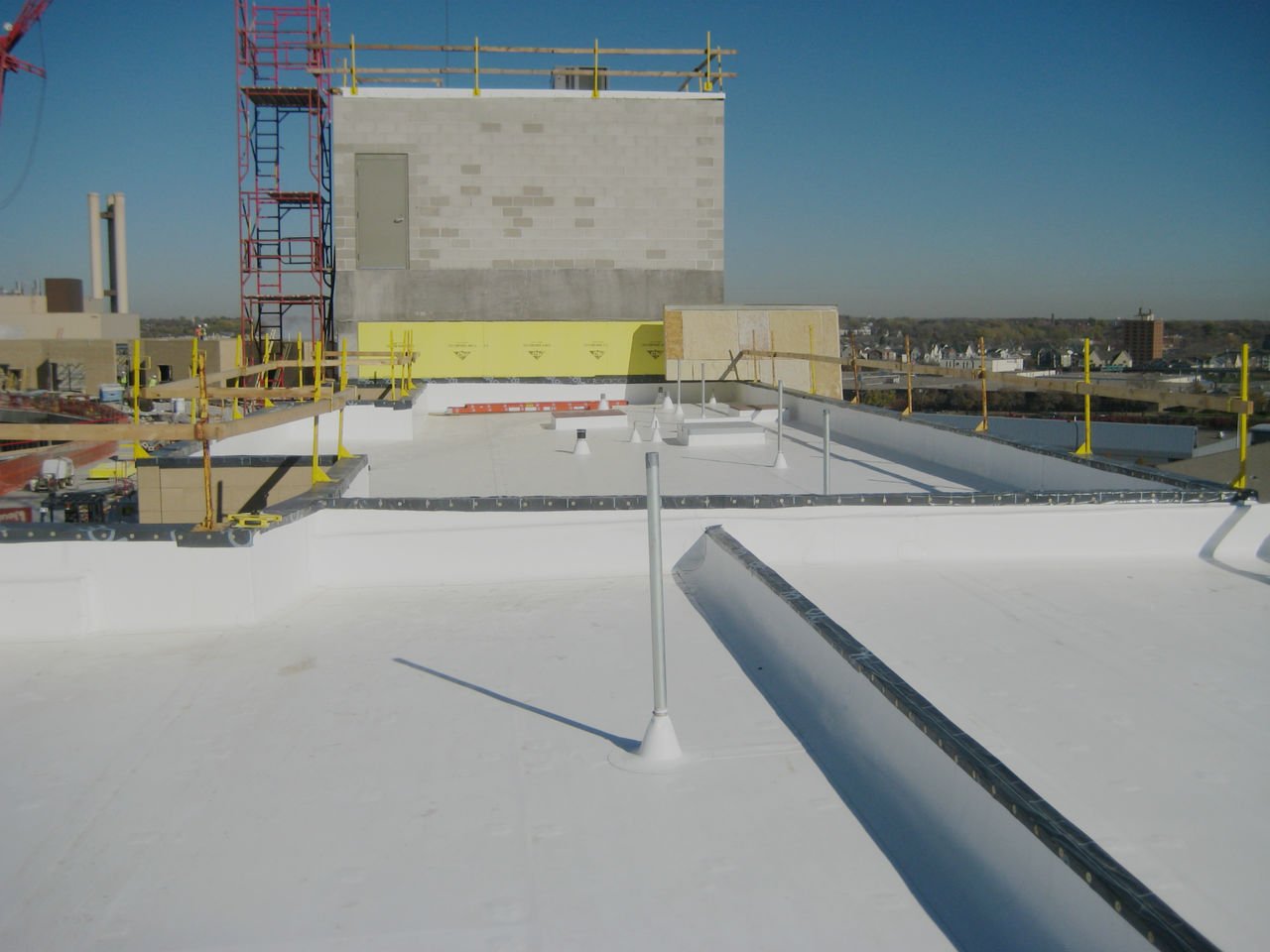
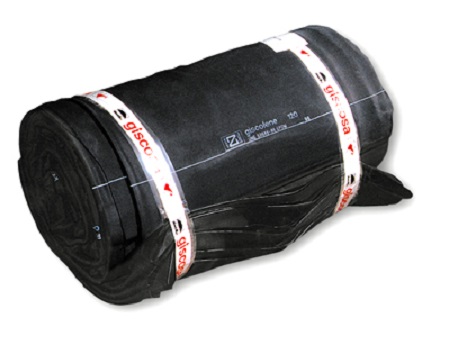
Roman Zaets
Installation of a membrane roof in the Crimea 89890898014